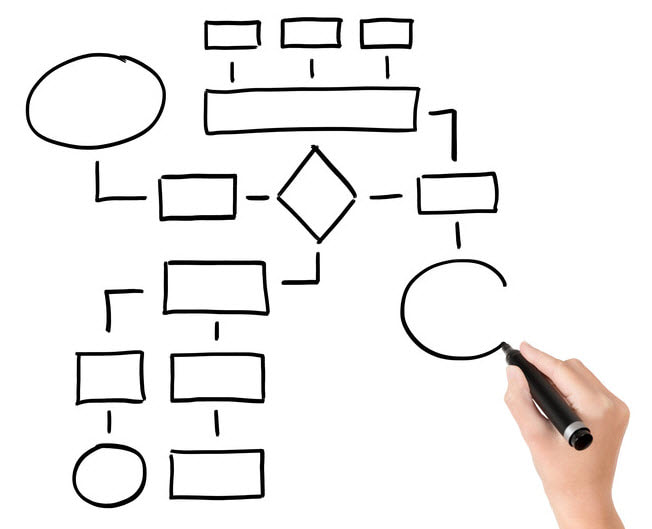
How to solve the question type "Diagram/Flow Chart Completion" in IELTS Reading
Task description
You are presented with a diagram/Flow Chart which shows some information from the text in picture format. There are labels on the diagram/Flow Chart pointing to specific parts of the diagram. The labels have missing words. You are asked to find the missing word or words.
How to approach this task
- The flowchart provides stages and links that should be matched with the order in which events happen in the reading text. Read each stage and identify key words and note the links between stages.
- The diagram requires focus on understanding how different parts of the picture relate to the description given in the reading text. Thus, you are required to use your own knowledge to comprehend the different parts of the diagram and read the text to identify the parts given in the description to complete the stage of a process or to label parts of an object.
- The information in flow charts and diagrams is usually in note form rather than full sentences. So, you should write key words and be careful of word limits.
It's time to practice!
Complete the flowchart in the link below:
Read the passage and complete the flow chart below.
Using NO MORE THAN TWO WORDS AND/OR A NUMBER from the passage for each answer.
Freya Stark
Born in Paris in 1893 |
First formal education at 1______ |
Worked as a 2_____ in Italy2 |
| Studied at School of Oriental Studies |
Travelled to the Lebanon, where she learned 3_____ |
Made a journey to the Syrian mountains on a 4_____ |
In 1934, won a 5_____ for a book |
Spent a further 6_____ in the Middle East |
How to solve this test?
Just using the 'keyword' technique. That means you have to find words in the text that have a similar meaning to words in the questions.
Keyword table for this practice test:
Keywords in Questions | Similar words in Passage |
First formal education at 1_____ | Although she had no formal education as a child, she moved about with her artist parents and learned French, German and Italian. She entered London University in 1912. |
Worked as a 2_____ in Italy | at the start of World War I, she joined the nurse corps and was sent to Italy. |
Travelled to the Lebanon, where she learned 3_____ | She travelled to the Lebanon in 1927 at the age of 33 when she had saved enough money, and while there, she studied Arabic. |
Explanation:
Question 1:
- In this question, you have to find the keywords: formal education.
- The Q1 form is noun (a place) so the correct answer is London University.
Question 2:
- In this question, you have to find the keywords: Italy, worked as.
- Find the synonyms of these keywords in the reading passage: Worked as = joined
- The Q2 form is noun (a job) so the correct answer is nurse.
Question 3:
- In this question, you have to find the keywords: Lebanon, learned.
- Find the synonyms of these keywords in the reading passage: learned = studied
- The Q2 form is noun (a language, a subject) so the correct answer is Arabic.
Now continue this technique with another questions. This may seem like a lot of work and in the beginning it will take a little time. But once you have practised this many times, you will be able to find your answers really fast and with much better accuracy and that will improve your score.




